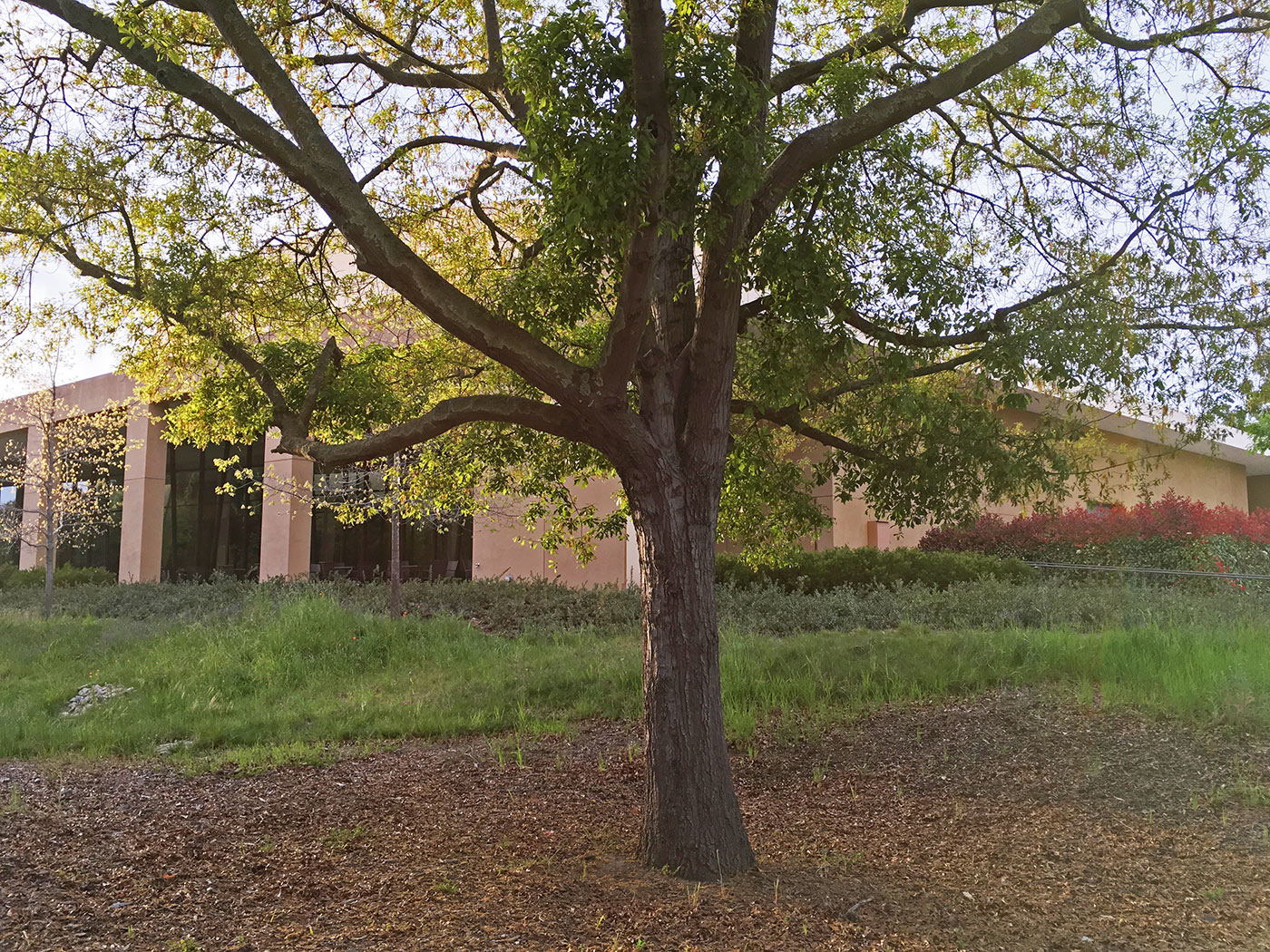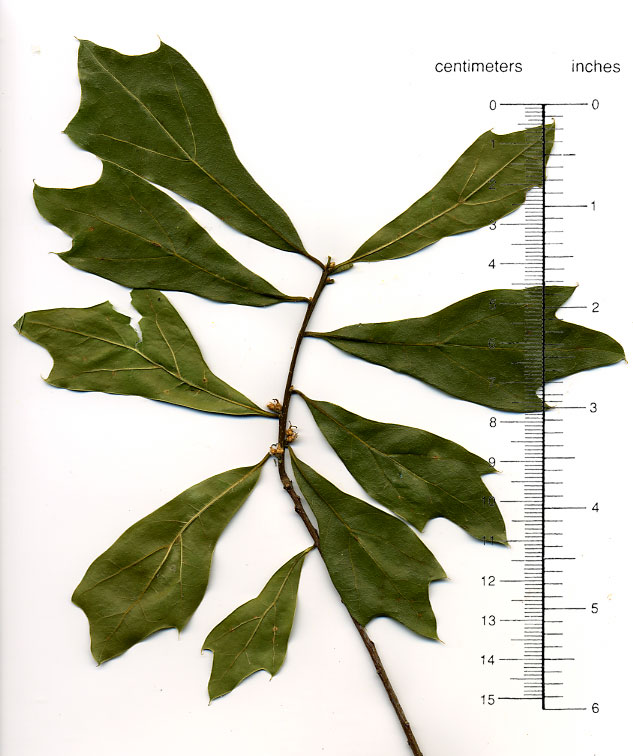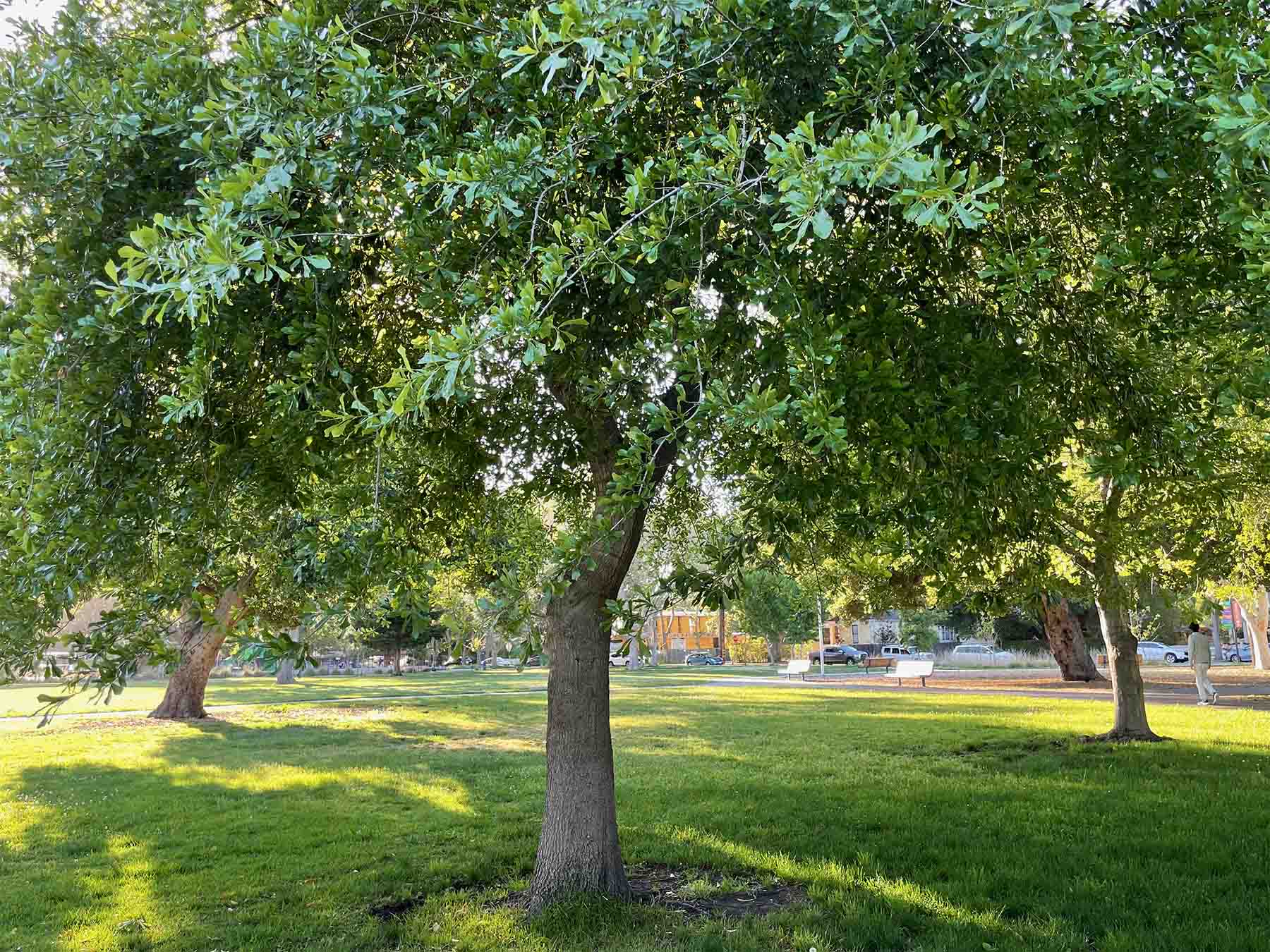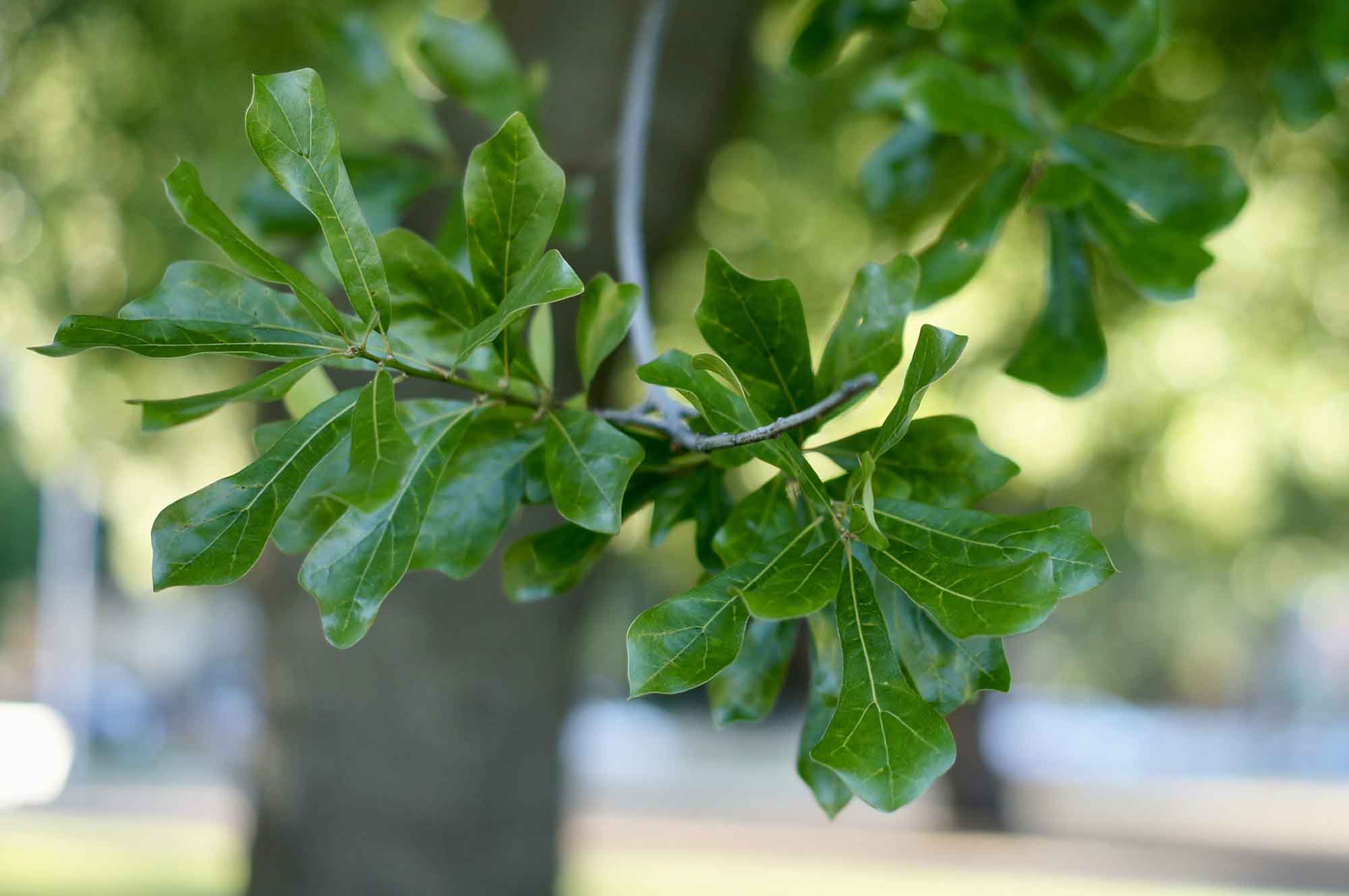Quercus nigra
 water oak
water oak
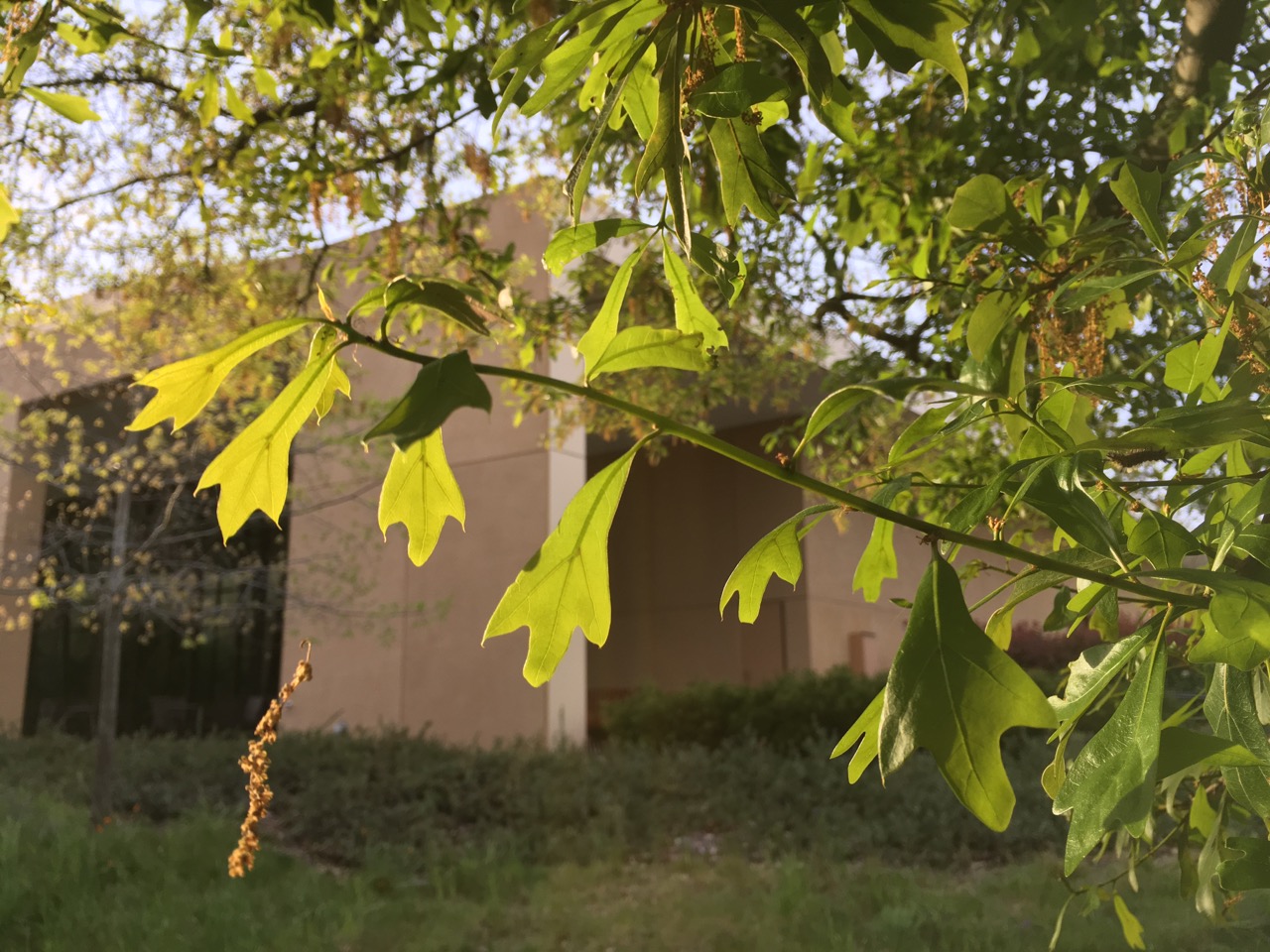
A40-foot specimen of this often scrubby oak grows at the southeast corner of Bing Concert Hall. It’s naturally found in inhospitable conditions but grows larger in good conditions, as this example attests. The triangular leaves are variable, often elongated to 6 inches, with three lobes at the tip.
The tree was initially identified as Quercus marilandica, blackjack oak. This identification was questioned.Douglas Goldman, Harvard University Herbaria, wrote 21 June 2009:
In agreement with the comment from David Muffly I think this tree is probably Quercus nigra, the water oak. It is definitely not Quercus marilandica. The leaves and twigs are far too narrow and the leaf texture is too thin to be Quercus marilandica. Quercus nigra have small acorns and usually hold some leaves through the winter, so from Muffly’s description this tree on Stanford’s campus would fit the description of this species.
I’ll admit that the leaves shown in the image are a bit strange for Q. nigra too, as they are consistently sharply 3-lobed, unlike the typically round-lobed to unlobed leaves of this species. Quercus nigra usually produces sharply lobed leaves on rapidly growing shoots, typically from where there has been trunk or stem damage, so perhaps the leaves shown online come from such a shoot. However, if this tree only has leaves like this then perhaps it is a hybrid, possibly with Q. falcata or maybe even with Q. marilandica.
Arborist David Muffly writes:
my identification… differs from what is in the latest Trees of Stanford book. But I have looked at other Q. nigra around the state and talked with oak nurserymen and am quite confident this is an accurate identification. It also agrees with the i.d. made independently by one of your staff a few years ago… The tree is roughly 35'×35'. It is classed as a semi-evergreen, which in this case indicates it shows fall color, and drops its leaves, later than any local deciduous tree, and then keeps a few green leaves in the lower canopy throughout the winter. The leaves themselves are thick, glossy, “wedge”-shaped, and turn a reasonable yellow/orange. In recent years this tree has been observed to produce a few acorns, which are quite small and take two years to ripen. The area immediately around the tree is notorious for being a wet spot on the campus – water is often seen sitting near the tree during rainy winters. This natural supplemental water may help explain the good growth of this particular tree (native to the southeastern U.S.) in what appears to be an otherwise dry and unirrigated location…
A few young trees grown from acorns gathered from this specimen are in the experimental oak planting near Palo Road. In Palo Alto, see three lush specimens of Q. nigra just south of the southwest corner of the tennis courts at Rinconada park, across from the path (map pin).
About this Entry: The main text of this entry is from the book Trees of Stanford and Environs, by Ronald Bracewell, published 2005. John Rawlings subsequently added notes that questioned the original identification of Q. marilandica. Rinconada Park locations of Q. nigra added; all locations up to date (May 2023, SP). Palo Road locations added (Jul 2024, SP).

